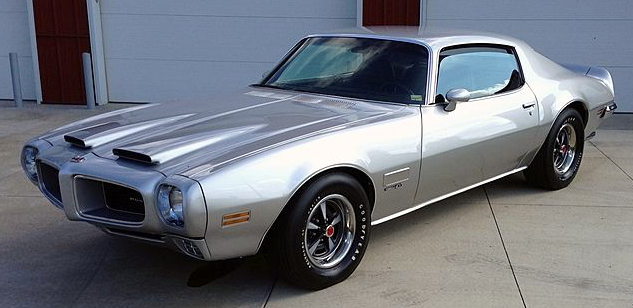Back in the late 1960s General Motors was prosperous and able to indulge the heads of the styling units responsible for the second-generation Camaros and Firebirds that appeared well into the 1970 model year. The Camaro head stylist was Henry Haga, who I wrote about here in regard to his Art Center School days. Firebird styling was initiated by Jack Humbert and carried out by Bill Porter.
Camaros were given a more crisp appearance, whereas Firebirds were a bit softer, more rounded. One result was disagreement over the placement and form of the character lines along the cars' sides. Rather than forcing one concept to prevail over the other, GM management allowed both variations to be produced even though the sides of Camaros and Firebirds required body stamping variations -- a somewhat costly solution.
The images below illustrate the results.
1970 1/2 Camaro, publicity image
This shows the strong character line on the side of the new Camaro.
1971 Firebird, for sale photo
Here the fold is less distinct.
1970 1/2 Camaro, for sale photo
Sighting down the car's side, the line remains strong.
1971 Firebird, Mecum auction photo
This is about as strong as the Firebird's character line can look.
1971 Camaro, Mecum auction photo
Here are side views. The doors have the same cut-lines.
1971 Firebird, Mecum auction photo
But the Firebird's character line is slightly lower than the Camaro's. That seems to have to do with its placement at centerline height of the headlights that, in turn, are lower than the Camaro's.
I think the Camaro could have used the Firebird's character fold, perhaps with a bit of integrating work around the headlights, or maybe a fade-out abaft of them. That's would be if corporate beancounters insisted on lower tooling costs. That said, the 1970s Firebirds and Camaros were attractive, good-selling cars, so the added expense might have been worth it.






1 comment:
Huh. I always assumed they were pretty much the same thing other than the front clip and rear details. There's really nothing that's the same below the greenhouse. (not exactly a greenhouse, but that's what it's called. Maybe there's a newer term?)
Maybe GM should have spent more and made them really different from each other. From the hints in the sheet metal you can see two different concepts of that sort of Mustangesque car.
Post a Comment